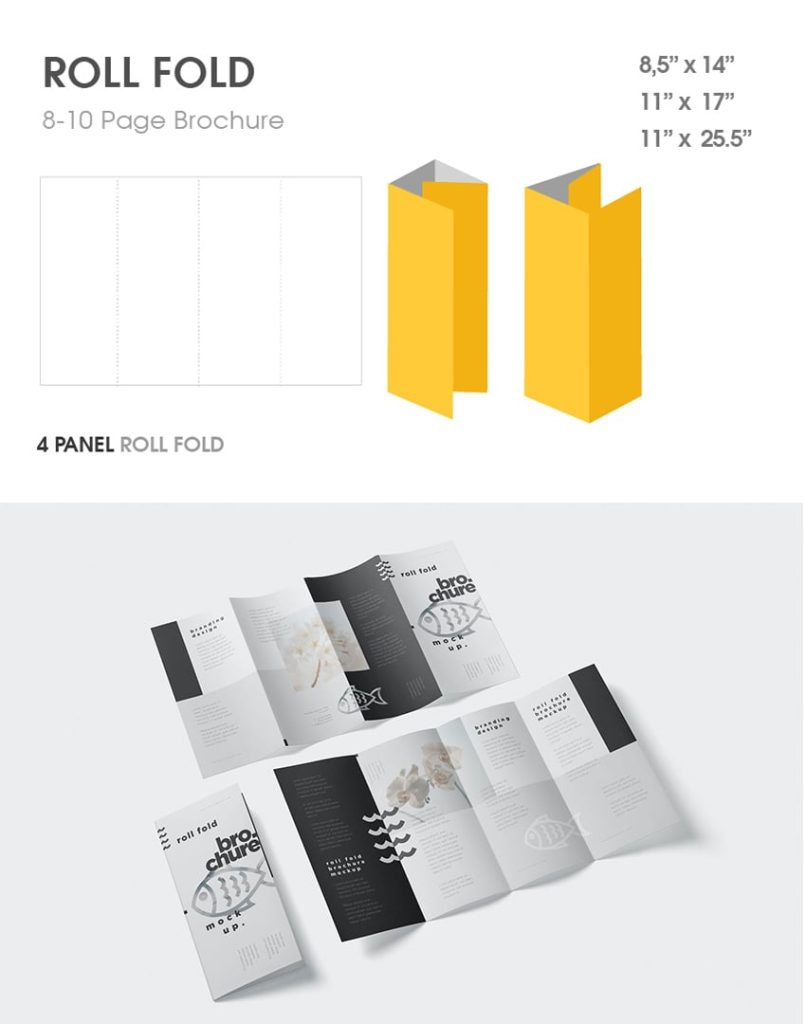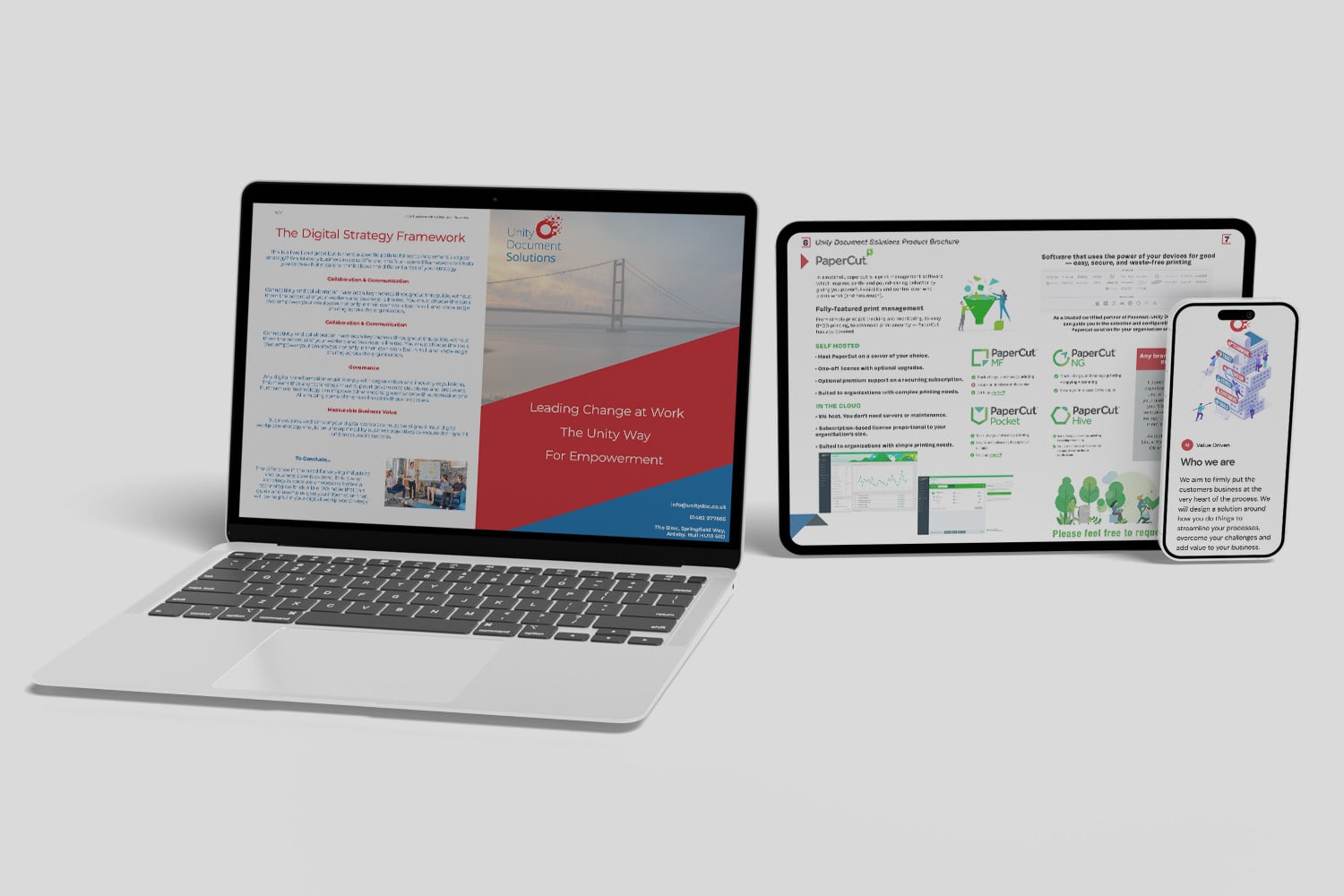Would you like to have a brochure created for your business? Before you begin, it may help to define a brochure and what they can do for your business.
Here, I’ll define a brochure and explain how it’s used in the simplest terms. Then, you’ll hopefully be able to make a decision on which best approach is for you.
Defining a Brochure
First, let’s go over the details of a brochure. Basically, it’s a marketing tool used to advertise a company’s products or services.
Key Points:
- Can be designed in several shapes and sizes
- Showcased in a folded or open orientation
- Features different types of content
You can use pictures and texts in brochures, meaning they need to have a professional layout and visual elements to catch the eye.

What is a brochure used for?
Brochures are initially used by businesses as an informative marketing handout. They are distributed either to advertise or showcase an existing or new product, business, or service, or to provide information about a related subject. Brochures are either handed out in person, delivered by mail, or distributed locally to customers.
Four easy steps to bring your new brochure to life.
- Can be designed in several shapes and sizes
- Showcase in a folded or open orientation
- Bifold or trifold brochures— to the more common bound multi-page booklet.

What are the Traditional Brochure Size Options
So what is a traditional brochure size? Well, there are different types of brochures and lots of standard brochure sizes. The one you choose depends on your content.
The most common brochure sizes before folding are 8.5” x 11”, 9” x 12”, 8.5” x 14”, 5.5” x 8.5”, 11” x 17”, and 11” x 25.5”:
- Letter size: 8.5” x 11”. Letter size is the most popular brochure size for product and service information as it has a perfectly balanced design area.
- 9” x 12”. This size is slightly bigger than the Letter size. It is typically used when you need to create more detailed designs and text.
- Legal size: 8.5” x 14”. This size is slightly larger paneled than the Letter size. If your design seems like a tight fit in 8.5” x 11”, use the Legal size to give it more white space around the design, so it won’t look crowded.
- Memo size: 5.5” x 8.5”. Memo size is half the size of Letter size. It is the smallest brochure size.
- Tabloid size: 11” x 17”. This size works best with large content areas and for creating multi-folded brochures.
- 11” x 25.5” is the biggest brochure size standard. Perfect for businesses who have a wide range of products and services to showcase, or to create step-by-step guides.

What is the Purpose & Benefit of a Brochure?
If you’re a business owner or designer and are wondering what the purpose of a brochure is and why to invest in brochure design, let me explain. It’s also useful to learn about brochure styles and types, and the best one for your business.
There are different types of brochures, but the first and foremost advantage of brochures is that they are a form of one-on-one tangible communication with your audience. Basically, they are pocket-friendly and make it easy to hand out information to new or existing customers. This is why you find brochures displayed in reception areas, stands, stalls, or where customers can pick one up and take it away with them.
Brochure styles are categorized according to the brand/company’s intended use, as listed below:
Responsive/Sales Orientated
Responsive brochures are used when you wish to answer company details, customer FAQs, or inquiries. It is a great tool for marketing in-shop to customers who have shown interest and are looking for additional information about the product or service provided. The aim of these types of brochure is to confirm the customer’s decision in choosing the product/service, and is more of a sales-oriented approach rather than customer attraction.
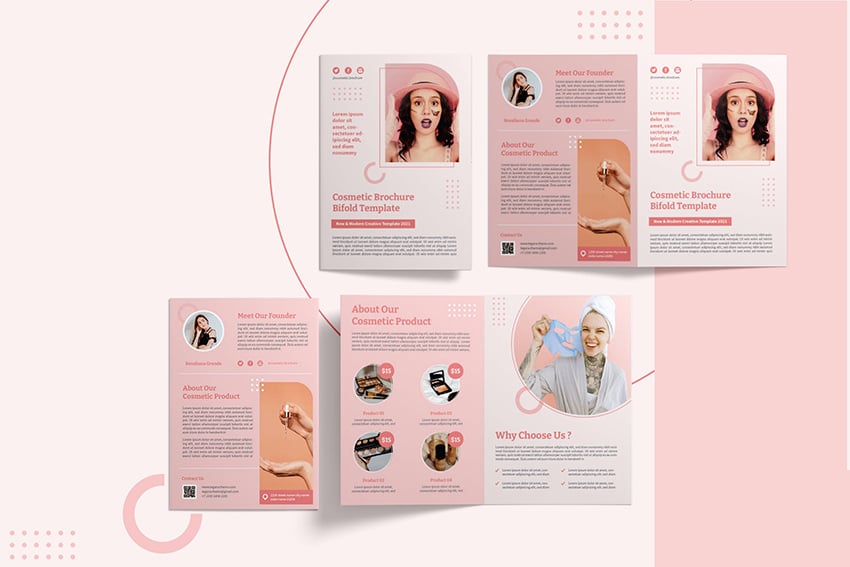
Check out / Attraction
These types of brochures are typically on retail countertops to attract first-time customers. They provide information on products and services or promotional material that the store offers. Typically these brochures are visually eye-pleasing and attention-grabbers, so the front page of the brochure design tends to include attractive graphics or images that catch the attention of customers.

Direct Information / Credibility
For customers who inquire about new products/services or additional details of a brand or company, a direct informational brochure is used. This form of brochure style builds business credibility in the market and is good for making customers feel confident in making a purchase. It typically contains product/service information and the company details.
These types of brochures help brands to portray a serious image of their business practices and build trust with their target audience.
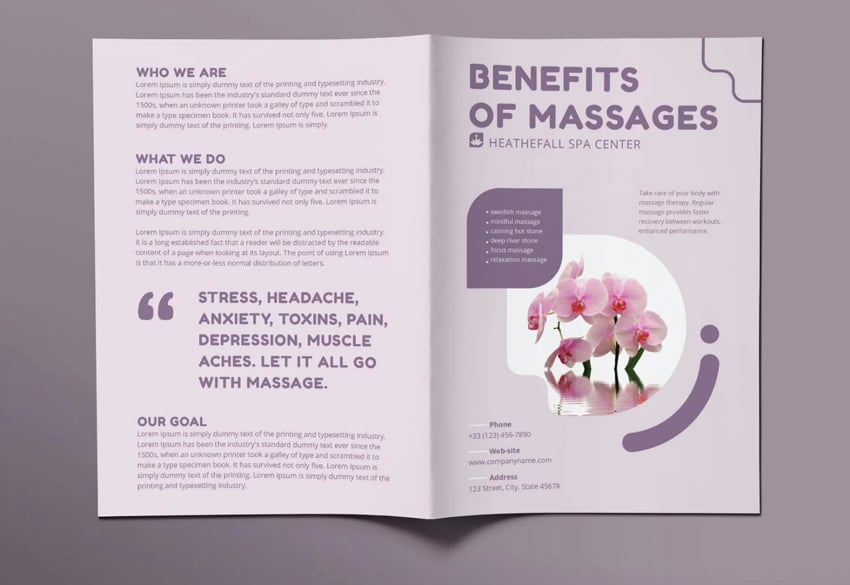
What are the Different Types of Brochure Folds & Usage?
How many types of brochure folds are there? When it’s time to design, there are several types of brochure to choose from in regards to size and the way it is folded. So what are the different kinds of folded brochures? Let’s have a look at some common types of brochure folds:
Single Fold (Half-Fold or Bi-Fold Brochure)
The single-fold brochure, also called a half-fold or bi-fold brochure, is the simplest of the brochure styles. Its name is self-explanatory: it is a paper size (legal, letter, or tabloid) folded in half. The half-fold brochure consists of four panels to add information: two internal panels with a front and back cover.
Although the number of pages is limited, the half-fold brochure provides better readability and enough room to place images and text, which makes it a great option for marketing. The front page is perfect for applying attractive visuals to the design.
A bi-fold brochure works well for informative content such as product presentations, tradeshows, invitations, price lists, restaurant menus, programs, bulletins, and more.

Tri-Fold Brochure (Letter Fold)
Along with the half-fold brochure, the tri-fold brochure is one of the most popular types for businesses. It’s also known as a letter fold.
Commonly used for product marketing, this classic tri-fold brochure has three equal panels. One fold tucks the middle panel inside the other two panels, by folding the right panel inwards first, and the left panel folds on top. Apart from using the standard 8.5” x 11” size, you can also design tri-folds using the 11” x 17” size or bigger, up to 25.5”.
A tri-fold brochure adapts to any size, and the six-panel format offers lots of flexibility, so you can exercise your creative imagination to design any type of layout. It’s one of the types of brochure folds that are eye-catching and tempting to open, which makes them suitable for menus, marketing, and high-impact designs.
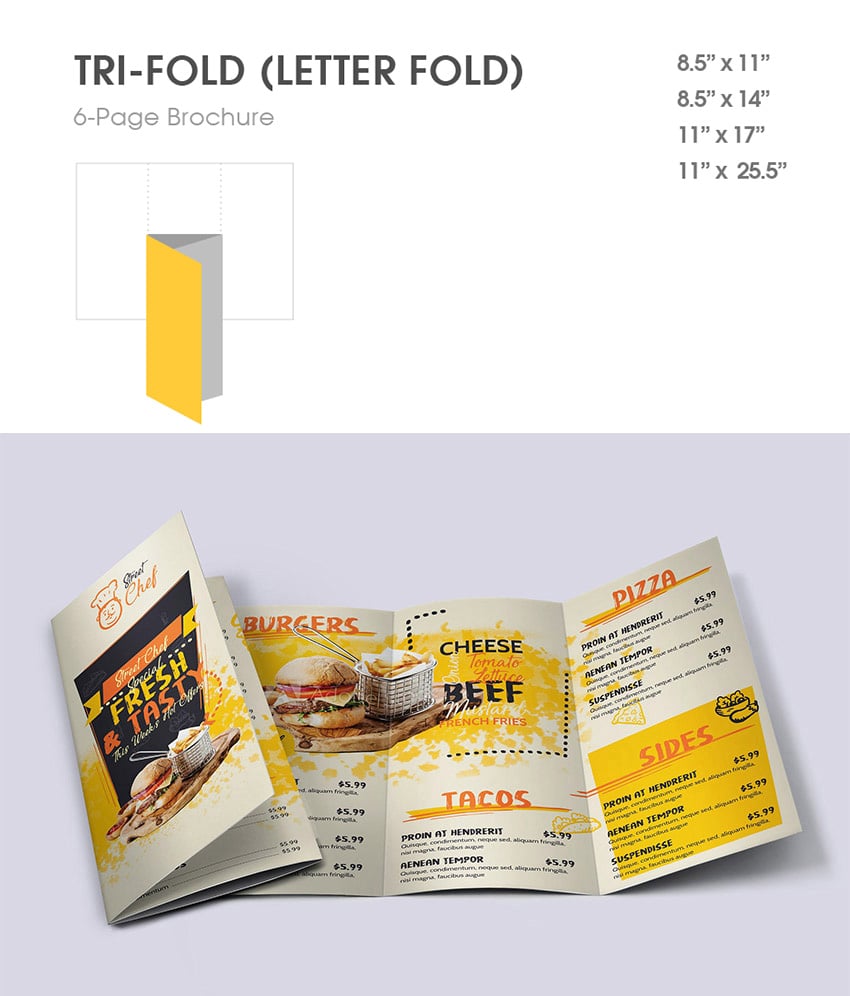
Z-Fold
The Z-fold is also a single piece of paper divided into three panels, similar to the tri-fold brochure, except it gets its name from its distinctive Z-shape fold. Z-folded brochures have each panel on top of each other to make a Z-shaped outline. Also note that the cover is on the right-most panel, rather than the left.
This type of brochure fold has a classy look. It opens left to right and can be placed in a standard envelope, which makes it a great choice for promotional or sales material, events, letters, invoices, special offers, product presentations, and price lists.
The Z-fold is a good alternative to the tri-fold, and both brochure styles are good for direct mail marketing. Make sure to use every panel to draw your customers’ attention.
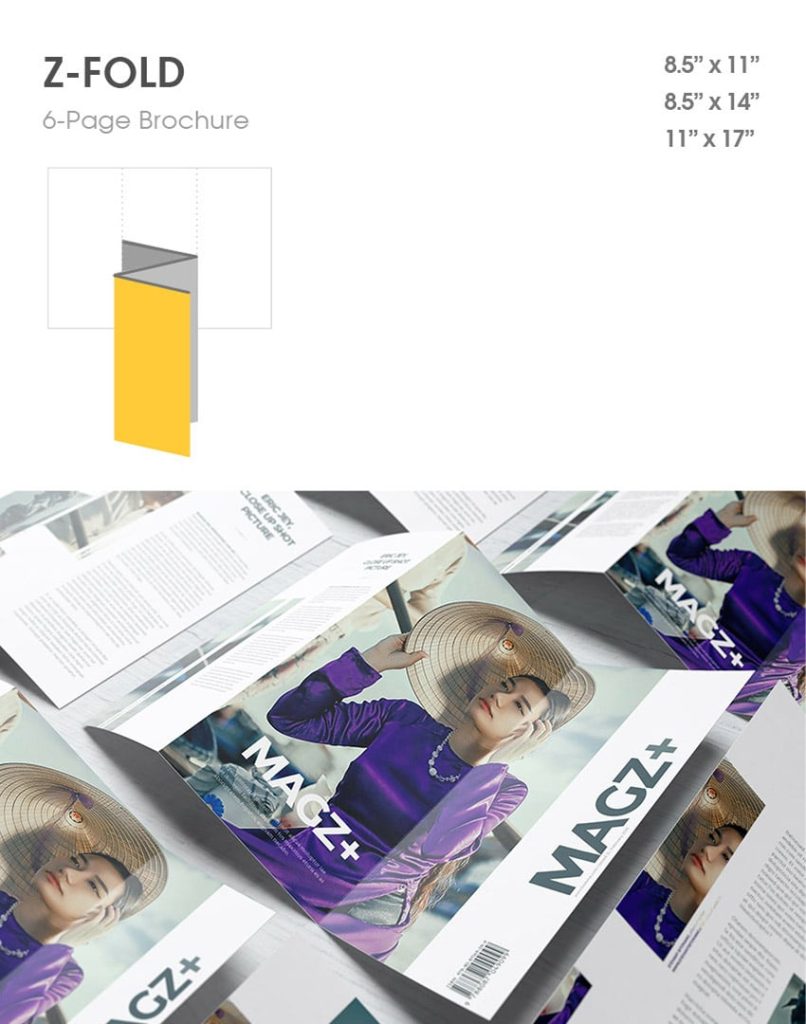
Open Single Gate-Fold
The open single gate-fold brochure is similar to tri-fold brochures. However, gate-folded brochures divide the paper into three unequal panels, unlike the equal panels in tri-folds.
It’s one of the types of brochure folds with a presentation-style format. It gives the impression of a door that opens to reveal a bigger central panel. To make the side panels fold like a gate, the side panels measure one-half of the width of the central panel.
What makes this type of fold eye-catching is the fact that the central panel is larger than the side panels, which acts as a focal point and draws the viewer’s attention inwards to the center. So for the perfect design, you can emphasize any major piece of content in the center and display the supplementary information on the sides. The gate-fold holds almost the same amount of information as a bi-fold brochure and works well for heavy design work, showcasing a single product, or large presentations.
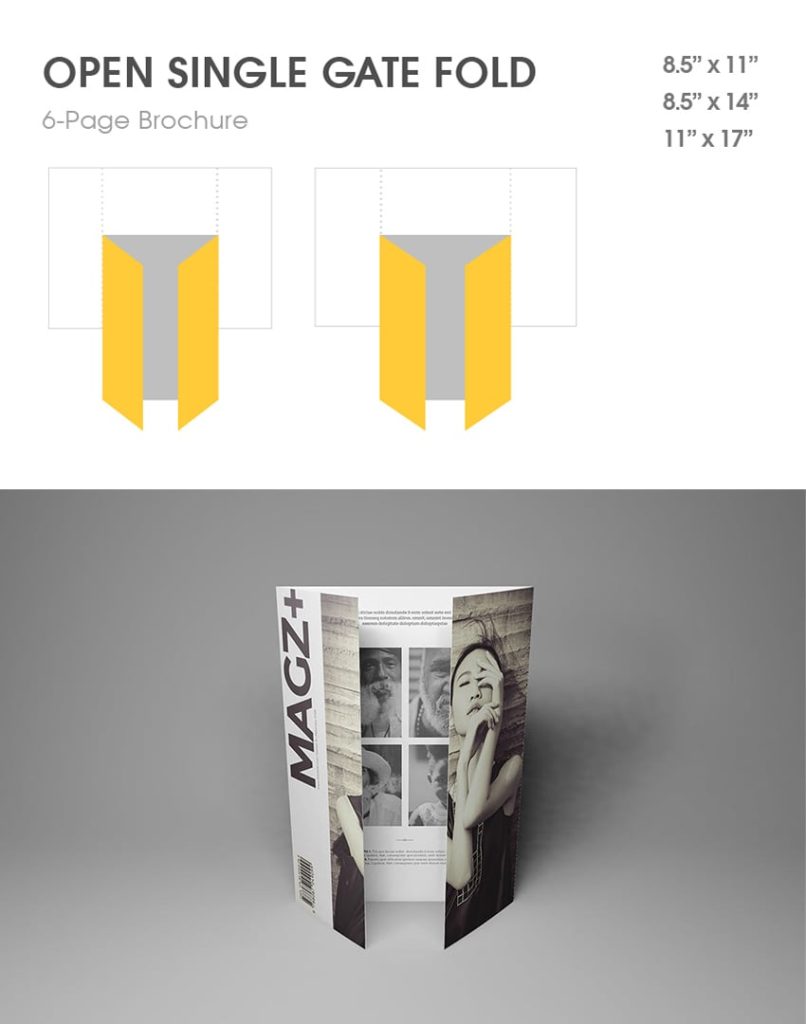
Accordion Fold
The Accordion Fold divides the brochure into four or five panels that fold on top of each other in a zigzag formation that looks like an accordion. It is similar to a Z-fold but with more panels to fold. This brochure type has more sections, about 8–10 panels for you to add the text and images, and it’s typically designed larger than the standard size of 8.5” x 14”.
Choose the Accordion Fold if you’re designing something with a lot of information, like tourism guides, maps, step-by-step tutorials, or menus, or if you have a list of products or services to display.

Double Parallel Fold
The Double Parallel brochure folds divide your paper in half to form two panels, and those panels are folded in half again to create two parallel folds that are aligned in the same direction. This fold layout is great for detailed presentations like product listings, services, and general information.
The standard brochure size for a Double Parallel Fold is 8.5” x 14”. It holds more content than a tri-fold brochure, and it has up to eight panels for print. The layout is ideal for reference material, listing products or services, statements, maps, sales content, and any kind of general information that might be found at a point of sale.
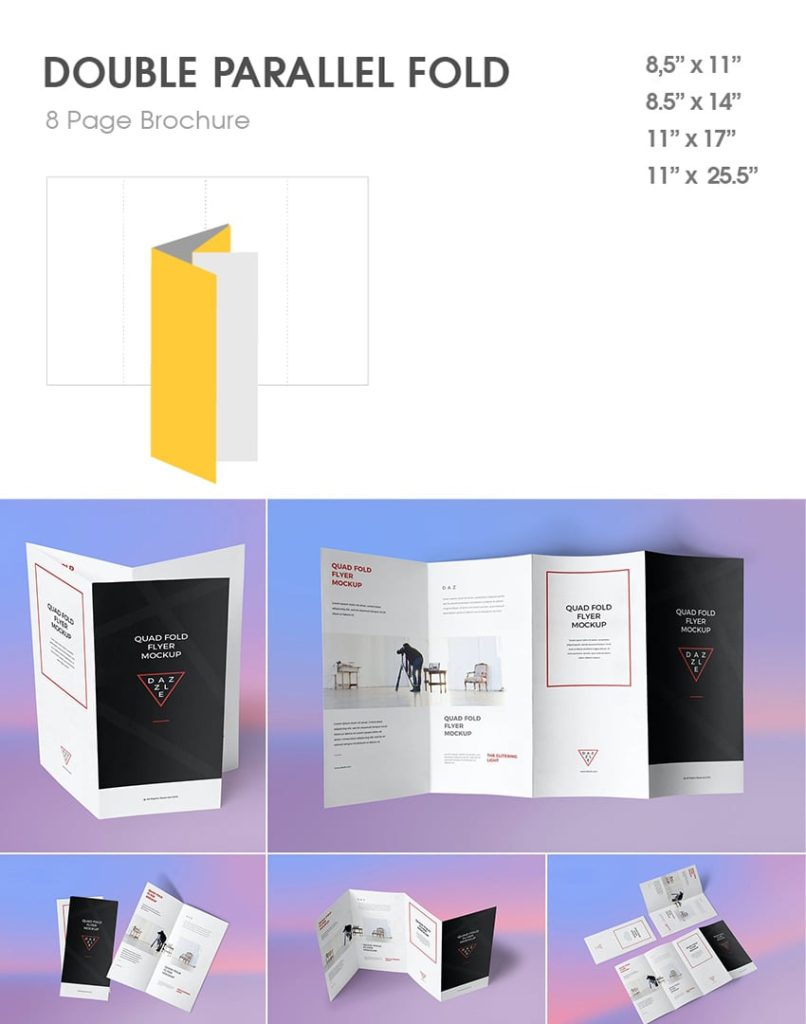
Quarter Fold (French Fold)
The Quarter Fold, also known as the French Fold, is unique in style. It is folded in half twice: once vertically, then again horizontally to create four panels. The French Fold is poster-like, as it can hold one large image on the inside of the four panels, and it’s normally used when you wish to minimize the total size of a project.
The standard brochure size for a French Fold is 17” x 11”. Use this fold for posters, advertising, maps, menus, event programs, invitations, and any graphic-heavy designs.
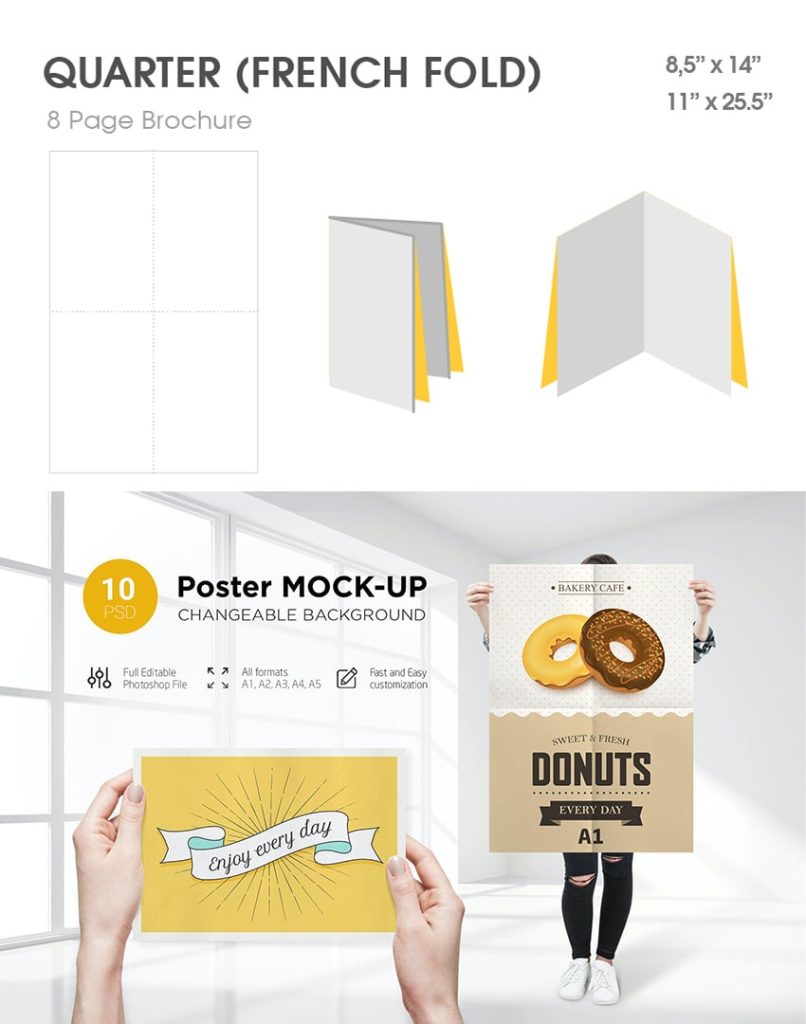
Roll-Fold
The roll-fold brochure is a half-fold tucked into another half-fold that folds inwards, so basically the folds roll inwards onto themselves. The roll-fold brochure folds in a few times, so it has eight to ten panels available for content and images, which makes it thicker than most brochures.
The standard size for this roll-fold brochure is 8.5” x 14”. Use the roll-fold if you have material that needs to be placed at a point-of-sale location, or when showcasing sales content, instructional booklets, tutorials, or step-by-step guides.
